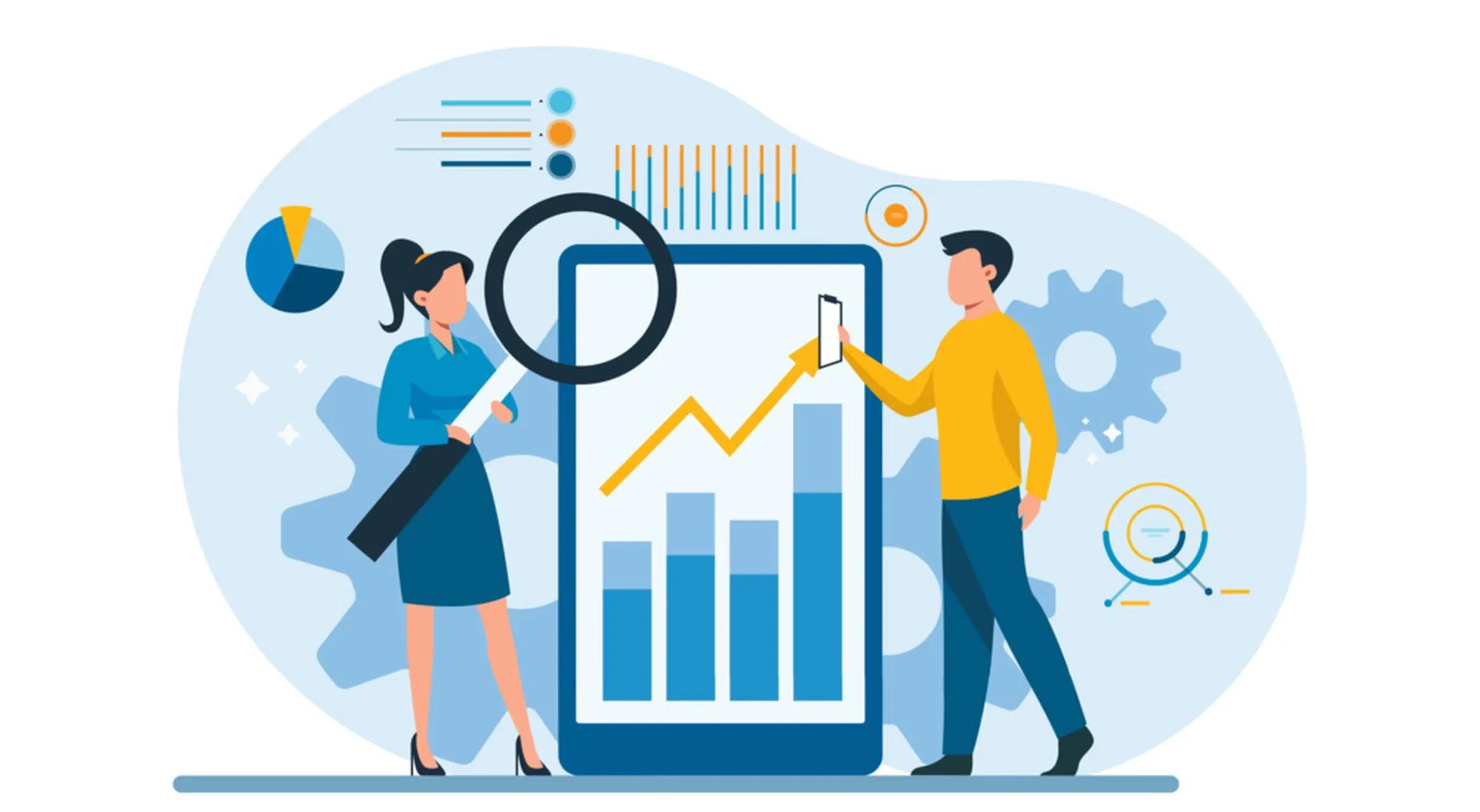Legacy System: Definition, Challenges, Types & Modernization

LIKE.TG 成立于2020年,总部位于马来西亚,是首家汇集全球互联网产品,提供一站式软件产品解决方案的综合性品牌。唯一官方网站:www.like.tg
Over 66% of organizations still rely on legacy applications for their core operations, and more than 60% use them for customer-facing functions. This widespread dependence on outdated technology highlights the significant role legacy systems play in modern business environments. Despite their critical functions, these systems also lead to increased maintenance costs, security vulnerabilities, and limited scalability. This blog will discuss why organizations continue to use legacy systems, the risks involved, and practical strategies for transitioning to modern alternatives.
What is a Legacy System?
A legacy system refers to an outdated computer system, software, or technology still in use within an organization despite the availability of newer alternatives. These systems are typically built on outdated hardware or software platforms. They may need more modern features and capabilities than newer systems offer. Legacy systems are often characterized by age, complexity, and reliance on outdated programming languages or technologies.
Type and Examples of Legacy Systems
Legacy systems can come in various forms and can be found across different industries. Some common types of legacy systems include:
-
Mainframe Systems
- Description: Large, powerful computers used for critical applications, bulk data processing, and enterprise resource planning.
- Example: IBM zSeries mainframes are often found in financial institutions and large enterprises.
-
Custom-Built Systems
- Description: Systems explicitly developed for an organization’s unique needs. These often lack proper documentation and require specialized knowledge to maintain and update.
- Example: An inventory management system developed in-house for a manufacturing company.
-
Proprietary Software
- Description: Software applications or platforms developed by a particular vendor may have become obsolete or unsupported over time.
- Example: An older version of Microsoft Dynamics CRM that Microsoft no longer supports.
-
COBOL-Based Applications
- Description: Applications written in COBOL (Common Business-Oriented Language), often used in banking, insurance, and government sectors.
- Example: Core banking systems that handle transactions, account management, and customer data.
-
Enterprise Resource Planning (ERP) Systems
- Description: Integrated management of main business processes, often in real-time, mediated by software and technology.
- Example: SAP R/3, which many companies have used for decades to manage business operations.
-
Customer Relationship Management (CRM) Systems
- Description: Systems for managing a company’s interactions with current and future customers.
- Example: Siebel CRM, used by many organizations before the advent of cloud-based CRM solutions.
-
Supply Chain Management (SCM) Systems
- Description: Systems used to manage the flow of goods, data, and finances related to a product or service from the procurement of raw materials to delivery.
- Example: Older versions of Oracle SCM that have been in use for many years.
-
Healthcare Information Systems
- Description: Systems used to manage patient data, treatment plans, and other healthcare processes.
- Example: MEDITECH MAGIC, used by many hospitals and healthcare facilities.
What Kind of Organizations Use Legacy Systems?
A wide range of organizations across industries still use legacy systems. Some examples include:
- Financial institutions: Banks and insurance companies often rely on legacy systems to manage their core operations, such as transaction and loan processing.
- Government agencies: Government bodies at various levels also use legacy systems to handle critical functions such as taxation, social security, and administrative processes.
- Healthcare providers: Hospitals, clinics, and healthcare organizations often have legacy systems for patient records, billing, and other healthcare management processes.
- Manufacturing companies: Many manufacturing firms continue to use legacy systems to control their production lines, monitor inventory, and manage supply chain operations.
- Educational institutions: Schools, colleges, and universities also use legacy systems for student information management, course registration, and academic record-keeping. These systems, sometimes decades old, have been customized over the years to meet the specific needs of the educational institution.
Challenges & Risks Associated with Legacy Systems
While legacy systems provide continuity for organizations, they also present numerous challenges and risks:
Maintenance and Support
The U.S. Federal Government spends over $100 billion annually on IT investments. Over 80% of these expenses are dedicated to operations and maintenance, primarily for legacy systems. These outdated systems often have high maintenance costs due to the skills and specialized knowledge required to keep them running.
As these systems age, finding experts to maintain and troubleshoot them becomes increasingly difficult and expensive. Additionally, vendor support for legacy systems diminishes over time or ceases entirely, making it challenging to obtain necessary patches, updates, or technical assistance.
Integration Issues
Integrating legacy systems with modern software and hardware poses significant challenges. These older systems may need to be compatible with newer technologies, leading to inefficiencies and increased complexity in IT environments. Legacy systems can also create data silos, which reduces information sharing and collaboration across different departments within an organization, thus impacting overall operational efficiency.
Security Vulnerabilities
One of the most critical risks associated with legacy systems is their vulnerability to security threats. These systems often no longer receive security updates, exposing them to cyberattacks. Additionally, legacy systems may need to support modern security protocols and practices, increasing the risk of data breaches and other incidents that can have severe consequences for an organization.
Performance and Scalability
Over the past five years, over 58% of website visits have come from mobile devices. However, many older systems still lack proper mobile optimization. Legacy systems frequently suffer from decreased performance as they struggle to handle current workloads efficiently.
This drawback often leads to slow load times, poor user experiences, and increased bounce rates. Furthermore, scaling legacy systems to meet growing business demands can be difficult and costly, limiting an organization’s ability to expand and adapt to market changes.
Compliance and Regulatory Risks
About 42% of organizations view legacy IT as a significant hurdle in compliance with modern regulations, such as GDPR (General Data Protection Regulation) and CCPA (California Consumer Privacy Act).
Older systems may need to comply with current regulatory requirements, which can result in legal and financial penalties for organizations. Ensuring compliance with regulations becomes more challenging with outdated systems, and conducting audits can be more complicated and time-consuming. This non-compliance risk is significant, especially in highly regulated industries.
Operational Risks
The reliability of legacy systems is often a concern, as they are more prone to failures and downtime, which can disrupt business operations. System failures can severely impact business continuity, especially if there are no adequate disaster recovery plans. This unreliability can lead to operational inefficiencies and the loss of business opportunities.
Innovation Stagnation
Relying on outdated technology can hinder an organization’s ability to adopt new technologies and processes, limiting innovation and competitive advantage. Employees working with legacy systems may experience frustration, affecting morale and productivity. This stagnation can prevent an organization from keeping up with industry advancements and customer expectations.
Data Management
Legacy systems might not support modern data backup and recovery solutions, increasing the risk of data loss. Ensuring the accuracy and integrity of data can be more difficult with older systems that need robust data management features. This risk can lead to potential data integrity issues, affecting decision-making and operational efficiency.
Transition Challenges
Migrating from a legacy system to a modern solution is often complex and risky, requiring significant time and resources. The transition process involves various challenges, including data migration, system integration, and change management. Additionally, the knowledge transfer from older employees familiar with the legacy system to newer staff can be challenging, further complicating the transition.
Why Are Legacy Systems Still in Use Today?
Despite their age and limitations, legacy systems are crucial in many organizations. They often house vast amounts of critical data and business logic accumulated over years of operation. Legacy systems continue to be utilized for many reasons:
- Cost of replacement: Replacing a legacy system can be complex and expensive. It may involve migrating immense amounts of data, retraining staff, and ensuring compatibility with other systems.
- Business-critical operations: Legacy systems often handle essential functions within an organization. The risks of interrupting or replacing them can be too high to justify the switch.
- Interdependencies: Legacy systems may be tightly integrated with other systems, making them difficult to replace without disrupting the entire ecosystem.
How to Modernize Legacy Systems
Modernizing legacy systems is critical for many organizations to stay competitive and responsive to dynamic market conditions. While often reliable, legacy systems can be costly to maintain, complex to scale, and incompatible with modern technologies.
These outdated systems can hinder innovation and agility, making it challenging to implement new features, integrate with contemporary applications, or leverage advanced technologies such as analytics, cloud computing, and artificial intelligence. Addressing these challenges through modernization efforts enhances operational efficiency and improves security, user experience, and overall business performance
Here are several strategies to modernize legacy systems effectively:
- Replatforming: Modify the underlying platform (e.g., move from a monolithic architecture to microservices) without changing the application’s core functionality.
- Refactoring: Rewrite parts of the application to improve its structure and performance without changing external behavior.
- Rearchitecting: Redesign the application architecture to leverage modern frameworks, patterns, and platforms.
- Encapsulation: Expose the legacy system’s functionality as services (APIs) to integrate with new applications.
- Data Migration: Migrate data from legacy software to modern databases or data warehouses and integrate with new systems.
Modernize Your Legacy System With LIKE.TG
Legacy systems, while crucial, can limit growth and innovation. Modernizing these systems is essential for improved business performance. Legacy system modernization is a complex initiative that requires a strategic approach, the right tools, and expertise to ensure a successful transition. This scenario is where LIKE.TG can be beneficial.
LIKE.TG is a leading data integration and management solutions provider that empowers organizations to modernize and transform their legacy systems. With LIKE.TG’s powerful data integration and API Management platform, organizations can seamlessly migrate, replatform, encapsulate, or replace legacy systems while minimizing disruption and maximizing return on investment.
LIKE.TG supports various file formats and protocols, ensuring smooth data flow and seamless integration with databases like Oracle and cloud platforms such as AWS S3. Its ETL/ELT capabilities ensure accurate and standardized data migration. Moreover, LIKE.TG’s intuitive API management allows for accessible building, testing, and deployment of custom APIs, which is essential for integrating legacy systems with modern applications.
With LIKE.TG, organizations can confidently transition from legacy systems to modern infrastructures, ensuring their data is reliable, accessible, and ready to meet current and future business needs. Sign up for a personalized demo today!

现在关注【LIKE.TG出海指南频道】、【LIKE.TG生态链-全球资源互联社区】,即可免费领取【WhatsApp、LINE、Telegram、Twitter、ZALO云控】等获客工具试用、【住宅IP、号段筛选】等免费资源,机会难得,快来解锁更多资源,助力您的业务飞速成长!点击【联系客服】
本文由LIKE.TG编辑部转载自互联网并编辑,如有侵权影响,请联系官方客服,将为您妥善处理。
This article is republished from public internet and edited by the LIKE.TG editorial department. If there is any infringement, please contact our official customer service for proper handling.


















